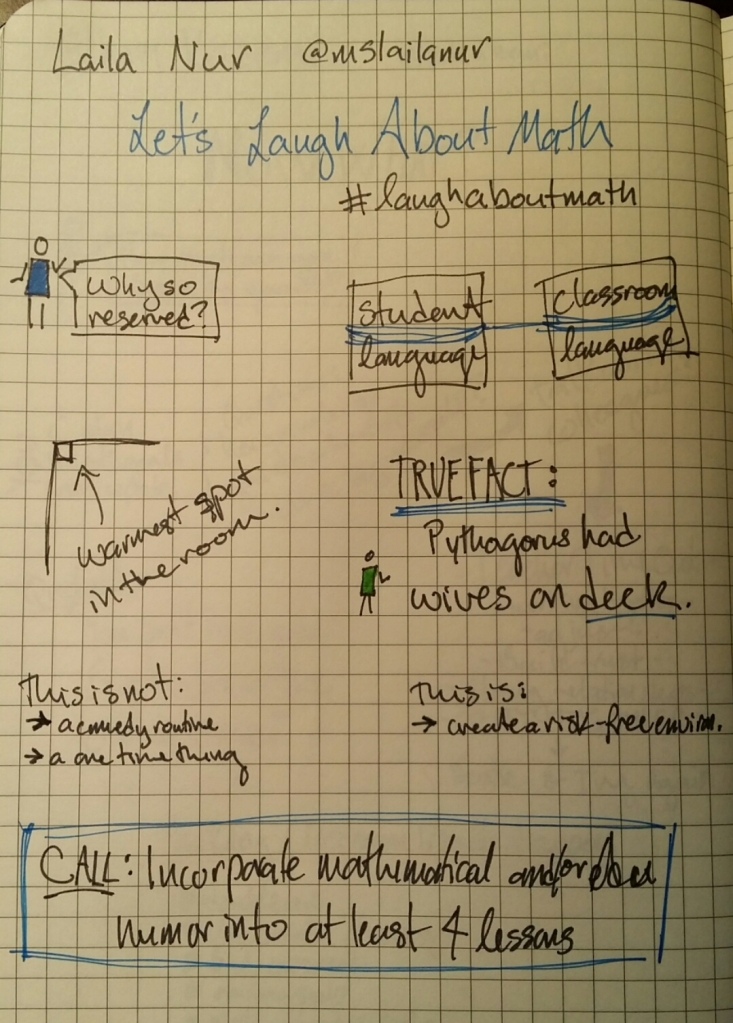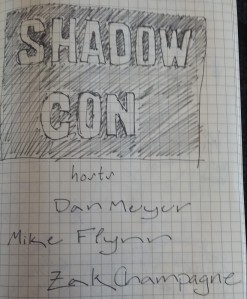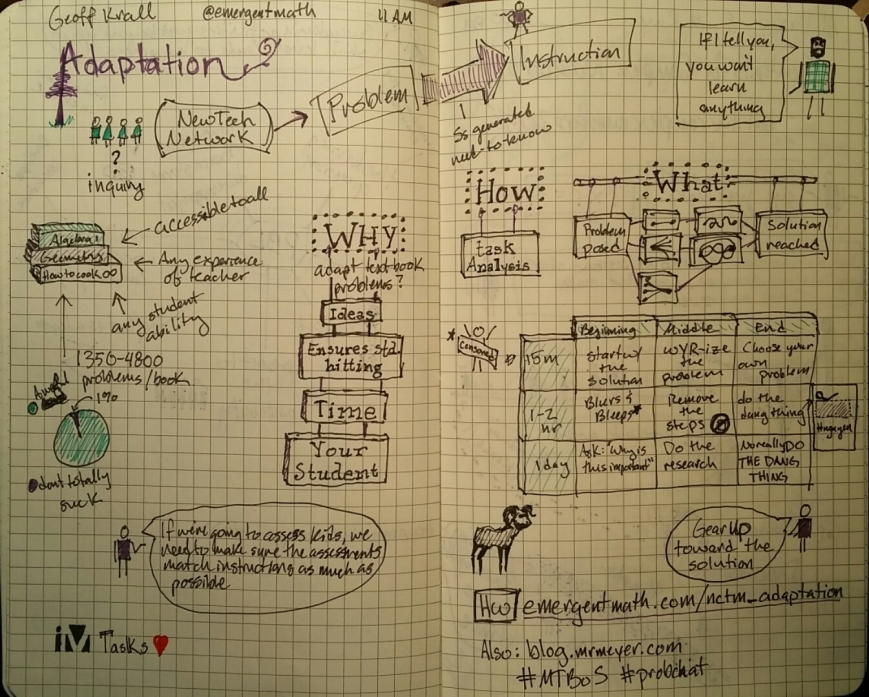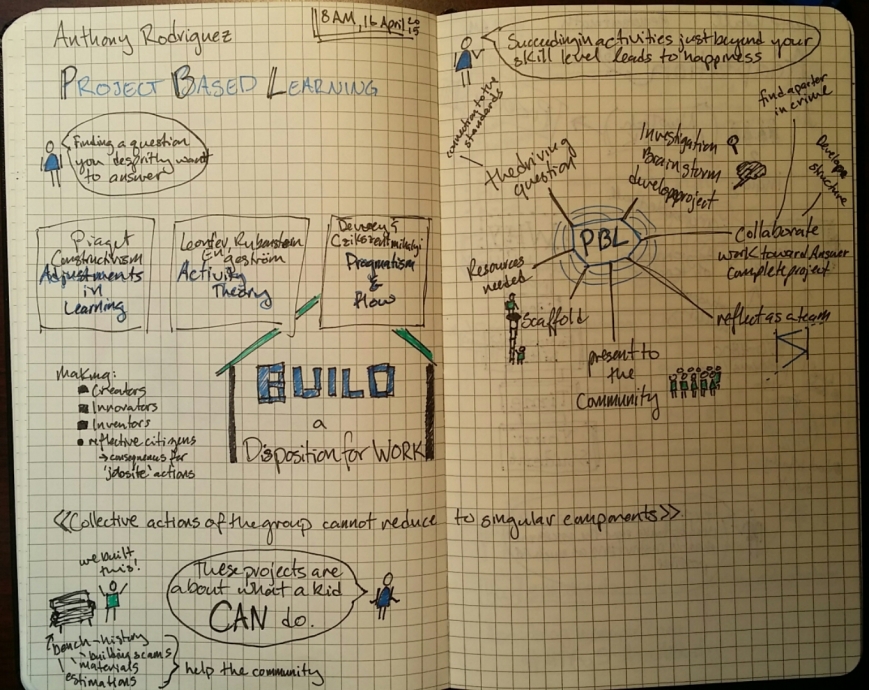Woo, blogging! As I start work on high school curriculum, I thought I would go back and revisit the grade 8 units that I’ve spent the past 18 months working on and share some of my favorite things. This gives me a chance to think about what sorts of things I really want to keep in mind as I write new stuff and gives folks a way to take a peek “under the hood” at how some activities came about. A new curriculum can be a daunting thing to jump into, so hopefully this is a friendly way to dip toes in. Let’s start in grade 8, unit 1, shall we? Oh, and some of the links are going to be to the online curriculum, which you’ll need to sign up for. Signing up is free and you can do that here.
Discussion in math class between students is important to me. My happiest days teaching were spent listening to students develop their abilities to articulate points with precision and clarity. While working on the Illustrative Mathematics 6-8 Math curriculum (fancy title, no?), one thing we did was start by focusing on familiar ideas that students would feel comfortable talking about in their own words. From that launching point, we could then build toward the main mathematical idea(s) of the lesson while also giving opportunities for students to practice engaging in mathematical discussions.
For example, one of my favorite new words that I learned while working on the curriculum is chirality. Left hands and right hands are examples of two things that are chiral. In order to orient both hands so that they line up perfectly, we have to use a reflection. While we don’t use the word chiral in the materials, in lesson 11 we have this image in the warm-up:
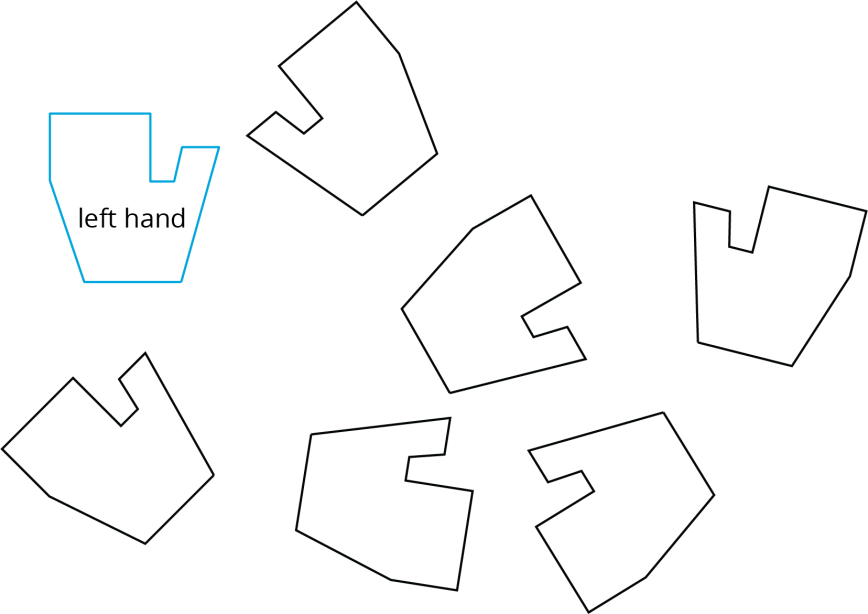
After students take time to identify all the right hands in the image, in the synthesis they are asked to “think about the ways in which the left and right hands are the same, and the ways in which they are different.” What ways do you think your students would come up with? (No really, what do you think they would say? What do you think you would have said as a youngster? I want to know!) Depending on how students define “the same,” they may focus more on the differences or more on the similarities. Both ways of thinking have justifiable responses, and this is purposeful. For this warm-up we want to engage as many students as possible early on and give them opportunity to articulate their thoughts so they can refine their ideas throughout the lesson about what it means for two things to be “the same.” Additionally, a teacher can use student words and ideas from the warm-up to fuel the rest of the lesson as the class makes steps toward a precise mathematical idea of “the same” (*cough*congruent*cough*).
Do let me know how younger you would have answered the question! Or, if you happen to have some handy students sitting around that don’t yet know what it means for two figures to be congruent, ask them and let me know in the comments.

